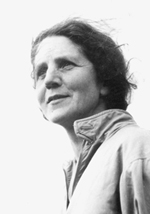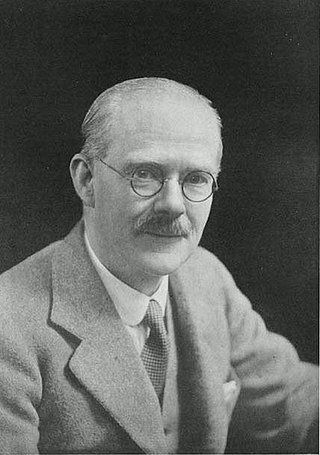
Rothamsted Research, previously known as the Rothamsted Experimental Station and then the Institute of Arable Crops Research, is one of the oldest agricultural research institutions in the world, having been founded in 1843. It is located at Harpenden in the English county of Hertfordshire and is a registered charity under English law.

The John Innes Centre (JIC), located in Norwich, Norfolk, England, is an independent centre for research and training in plant and microbial science founded in 1910. It is a registered charity grant-aided by the Biotechnology and Biological Sciences Research Council (BBSRC), the European Research Council (ERC) and the Bill and Melinda Gates Foundation and is a member of the Norwich Research Park. In 2017, the John Innes Centre was awarded a gold Athena SWAN Charter award.
Lilian Suzette Gibbs (1870–1925) was a British botanist who worked for the British Museum in London and an authority on mountain ecosystems.
Frances Mary Perry MBE VMH was an English gardener, administrator, writer and broadcaster.
Lilian Clarke was a botany teacher at James Allen's Girls' School in Dulwich, South London from 1896 to 1926, where she developed botanical gardens, which became known as 'The Botany Gardens'.
Winifred Mary Curtis was a British-born Australian botanist, author and a pioneer researcher in plant embryology and cytology who played a prominent role in the department of botany at the University of Tasmania (UTAS), where the main plant science laboratory is named in her honour.

Elsie Maud Wakefield, OBE was an English mycologist and plant pathologist.

Norah Lillian Penston was a British botanist and academic administrator. She was principal of Bedford College, University of London, from 1951 to 1964.

Edavalath Kakkat Janaki Ammal (formally known as Janaki Ammal) (4 November 1897 – 7 February 1984) was an Indian botanist who worked on plant breeding, cytogenetics and phytogeography. Her most notable work involved studies on sugarcane and the eggplant (brinjal). She also worked on the cytogenetics of a range of plants and co-authored the Chromosome Atlas of Cultivated Plants (1945) with C.D. Darlington. She took an interest in ethnobotany and plants of medicinal and economic value from the rain forests of Kerala, India. She was awarded Padma Shri in 1977.

Helen Kemp Porter was a British botanist from Imperial College London. She was a Fellow of the Royal Society and the first female professor at Imperial College London. Her studies of polysaccharide metabolism in tobacco plants were groundbreaking; she was one of the first British scientists to use the innovative technologies of chromatography and radioactive tracers.
Katherine Warington was a botanist and the first person to show that boron, as boric acid, was essential for the healthy growth of plants.

Mary Dilys Glynne was a British plant pathologist and mountaineer.

Frances Joan Harvey Moore, OBE was a British plant pathologist, science administrator and conservationist.

Frances Mary Gore Micklethwait was an English research chemist, among the first to study and seek an antidote to mustard gas during the First World War. She received an MBE for her top secret wartime work in chemical warfare, which has since come to light.
Catherine Cassels Steele was a Scottish scientist who is best known for her expertise in plant biochemistry. She wrote An Introduction to Plant Biochemistry.
Winifred Mary Adelaide Brooke was a British botanist, illustrator and author who made scientifically significant collections of botany specimens, including in the Bolivian Andes. The plant genus Misbrookea was named in her honour by Vicki Funk.
Swanley Horticultural College, founded in 1889, was a college of horticulture in Hextable, Kent, England. It originally took only male students but by 1894 the majority of students were female and it became a women-only institution in 1903.
Guðbjörg Inga Aradóttir FRES is an Icelandic entomologist and researcher at the National Institute of Agricultural Botany (NIAB) in the UK. Her work identifies novel crop protection solutions against insect agricultural pests and the diseases they transmit. She is particularly known for her research on plant resistance to cereal aphids and the Barley Yellow Dwarf Virus

Alice Hutchins was one of the two first women gardeners hired at Kew Gardens in 1896.

George Herbert Pethybridge was a British mycologist and phytopathologist, who gained an international reputation for his research on diseases of the potato species Solanum tuberosum. He is noteworthy for his 1913 discovery of the water mold species Phytophthora erythroseptica.












